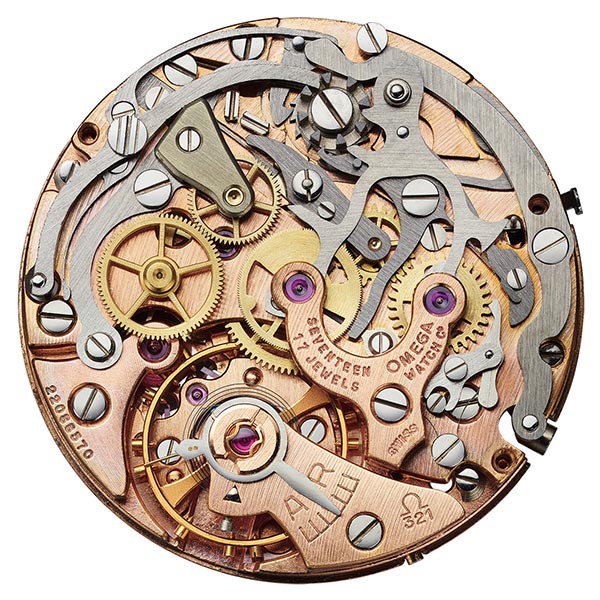Little did I know when I penned my Monday editorial on the links between watch brands and the history and future of space exploration that an entire project team (researchers, engineers, historians, watchmakers – you name it) had been working under the secret codename Alaska 11 over the past two years to bring the legendary Omega calibre 321 back to life. After writing the editorial I concluded that, when it came to space exploration, watch brands had their attention focused on the past. In a way, Omega has proved my point, but they have done so in a brilliantly revolutionary way.
It’s difficult to overstate the significance of this announcement for Speemdaster collectors and it may be difficult to fully understand unless you are a true Speedmaster fanatic. As a proud owner of an early 2000s model Speedmaster Moon Phase equipped with the 1866 manually-wound calibre that was derived from the calibre 321, I have to admit that it is definitely my favourite movement to admire through the sapphire crystal. But for collectors like our own contributor Serge Panczuk and Robert-Jan Broer (founder of the Fratello Watches website, inventor of the #speedytuesday hashtag and leading authority on the Speedmaster), the news is nothing short of epoch-making.

If you’re not convinced, do a quick search for a calibre 321 Speedmaster for sale on line, note the five-figure price, then come back and continue reading. Few movements have enough desirability among collectors to convince a modern CEO to commit to restart production of them exactly as they were 50 years ago. Omega’s boss Raynald Aeschlimann can be lauded for taking up this audacious challenge. “It’s amazing that so many people are passionate about the Calibre 321,” he says. “We produced the last one in 1968 and fans have never stopped talking about it. That shows how special it is. We’re very excited to finally meet their wishes and have gone to great efforts to bring the movement back.”
Just one small anecdote is enough to show just how great these efforts were. In its quest to re-develop this calibre in a manner that was totally faithful to the original (with the small exception of the Sedna gold PVD coating on the bridges to recreate the copper colour), rather than open up and disassemble the movement in the precious watch of Eugene Cernan, the last man to walk on the moon, Omega resorted to computer tomography (a technique more familiar from body scanners) to create a complete scan of the movement inside this watch.
What is even more astonishing is that this excitement is, for the moment, just about the movement. It was presented to a select group of Robert-Jan’s followers at the Omega Headquarters in Bienne and there is, as yet, no watch. But given that this is the 50th anniversary of the lunar landing that firmly put the Speedmaster and its calibre 321 in the history books, we will no doubt see something very special at whatever event or platform that will substitute Omega’s presence at Baselworld this year. The company promises us that “further evolutions and information will follow over the coming months”. After the initial frenzy, collectors now have a few months to discuss among themselves what kind of Speedmaster might have the honour of housing this legendary movement. Omega certainly knows how to keep its fans always wanting more!







